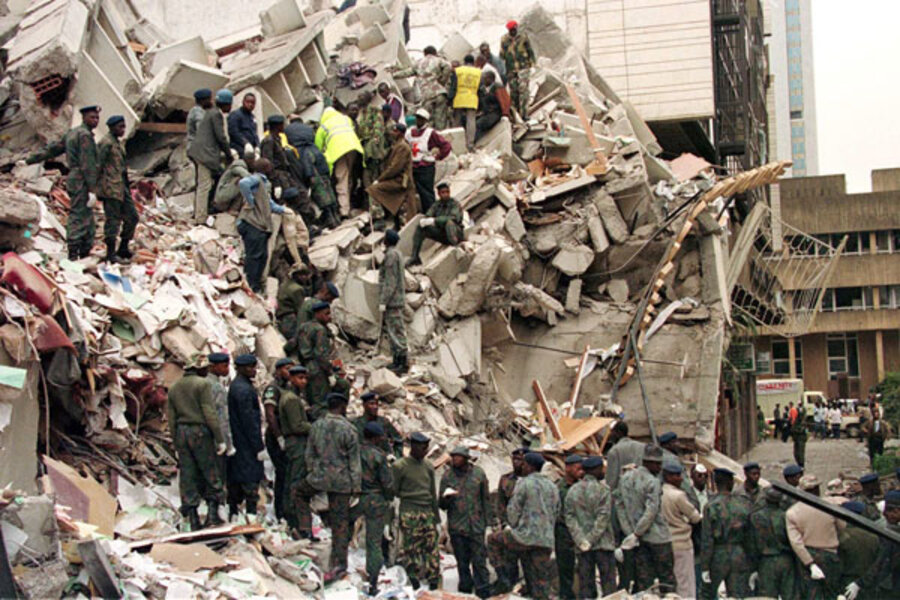Navy SEALs Somalia raid: Is daring attack a sign of shifting strategy?
Loading...
Two raids against Al Qaeda-linked targets in Africa Saturday raise questions about the drone-strike campaign that has, until now, largely defined President Obama's response to terrorist threats against America and its interests abroad.
In Libya, American commandos seized Anu Abas al-Liby, who has been linked to the bombing of American embassies in Kenya and Tanzania in 1998. In Somalia, Navy SEALs attacked the house of an Al Shabab militant thought to be connected to the shopping mall massacre in Kenya last month.
Mr. Liby was surrounded outside his house and taken captive in a daring operation in the Libyan capital of Tripoli, according to The Associated Press. It remains unclear exactly who the SEALs were targeting in Somalia, but media reports suggest the raid failed.
The operations highlight evolving trends in global terrorism. The threat is becoming more diffuse, marked by a broader footprint but less ability to project force far beyond terrorists' local strongholds, according to some experts. In this more-decentralized landscape, Africa is a focal point along with Yemen and Pakistan.
Moreover, in another emerging trend, neither operation Saturday appeared to involve drone strikes.
Mr. Obama signaled a policy shift on drone strikes in May. To that point, drone strikes had been the Obama administration's central tool in fighting terrorism – allowing the United States to kill terrorist suspects abroad without risking personnel. In 2010, for example, the US launched 117 drone strikes in Pakistan alone, according to data from Long War Journal.
But the tactic bred deep resentment abroad, and critics said it was counterproductive because terrorists could use that anger as a recruiting tool. Obama acknowledged these concerns in May.
"To say a military tactic is legal, or even effective, is not to say it is wise or moral in every instance," he said in a speech at the National Defense University. "For the same human progress that gives us the technology to strike half a world away also demands the discipline to constrain that power – or risk abusing it."
Statistics suggest Obama was already reining in the drone campaign. As of May, drone strikes in Pakistan were at 46, while strikes in Yemen had fallen from 42 in 2012 to 10 through the first five months of 2013.
The question, then, has been: When will the Obama administration approve drone strikes?
One clear instance was the reported terrorist threat in August that resulted in the temporary closure of more than a dozen US embassies in the Middle East. Those closures were accompanied by a flurry of drone strikes in Yemen – six in 10 days.
But the decision not to use drones to kill suspected terrorists in Libya and Somalia Saturday could offer further insight into Obama administration policy.
Of course, numerous factors could have come into play: perhaps US counterterrorism officials wanted to take the two men into custody for intelligence reasons, or perhaps drone strikes would have carried a high risk of civilian deaths.
Yet early reports suggest that both operations were dramatic and involved risk to American commandos – the sorts of operations that, in the past, might have been entrusted to drones, generally speaking.
A senior American official told The New York Times that Libyan officials had been told of the operation; the Libyan government denied having any foreknowledge. The AP account cites Liby's brother saying Liby "was parking outside his house early Saturday after dawn prayers when three vehicles encircled him, smashed the car's window and seized his gun before grabbing him and taking him away. The brother said [Liby's] wife saw the kidnapping from her window and described the abductors as foreign-looking armed 'commandos.' "
Meanwhile, in Somalia, Navy SEALs came ashore from the Indian Ocean before sunrise, according to reports. They abandoned the mission in the face of stiff resistance, according to AP.






